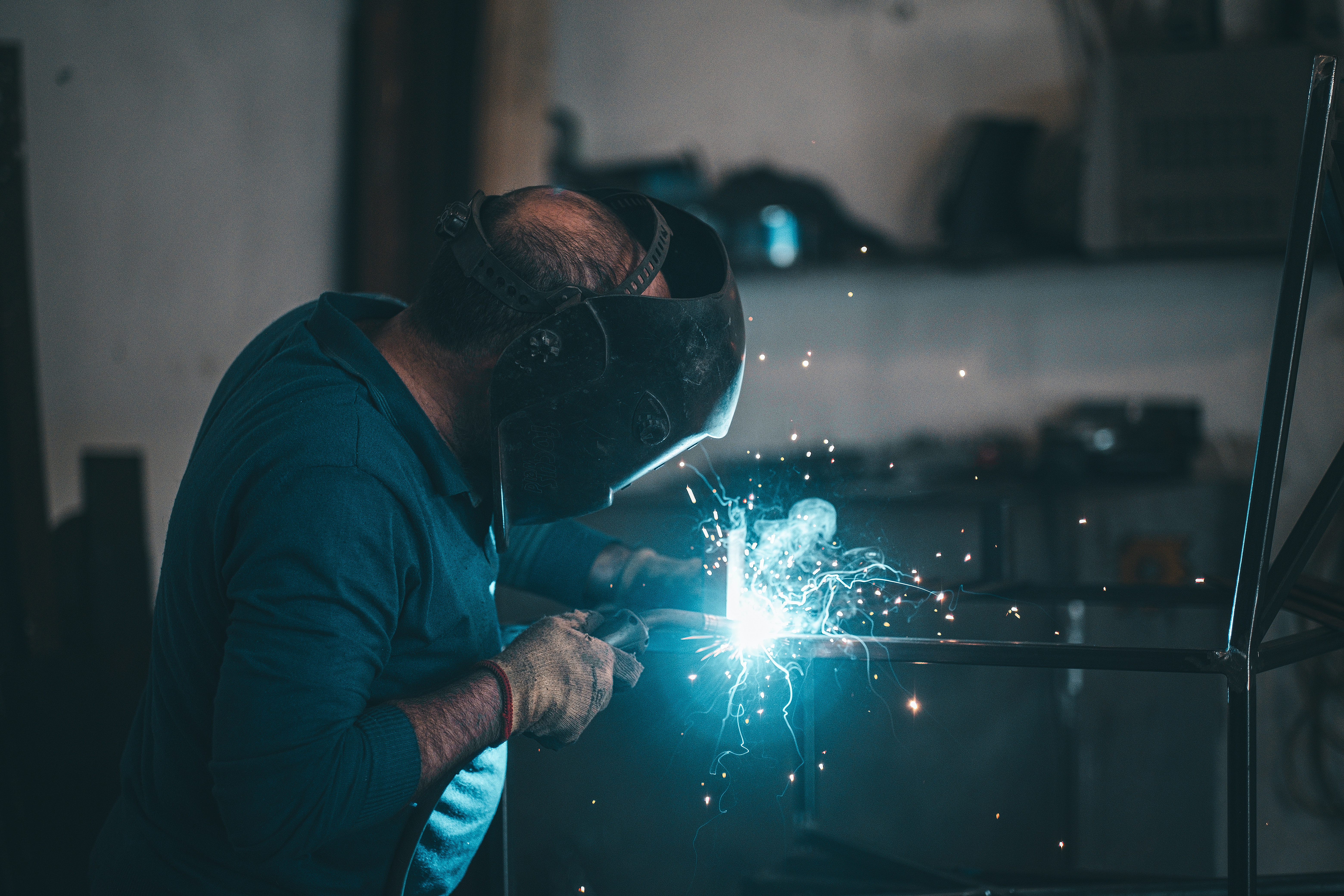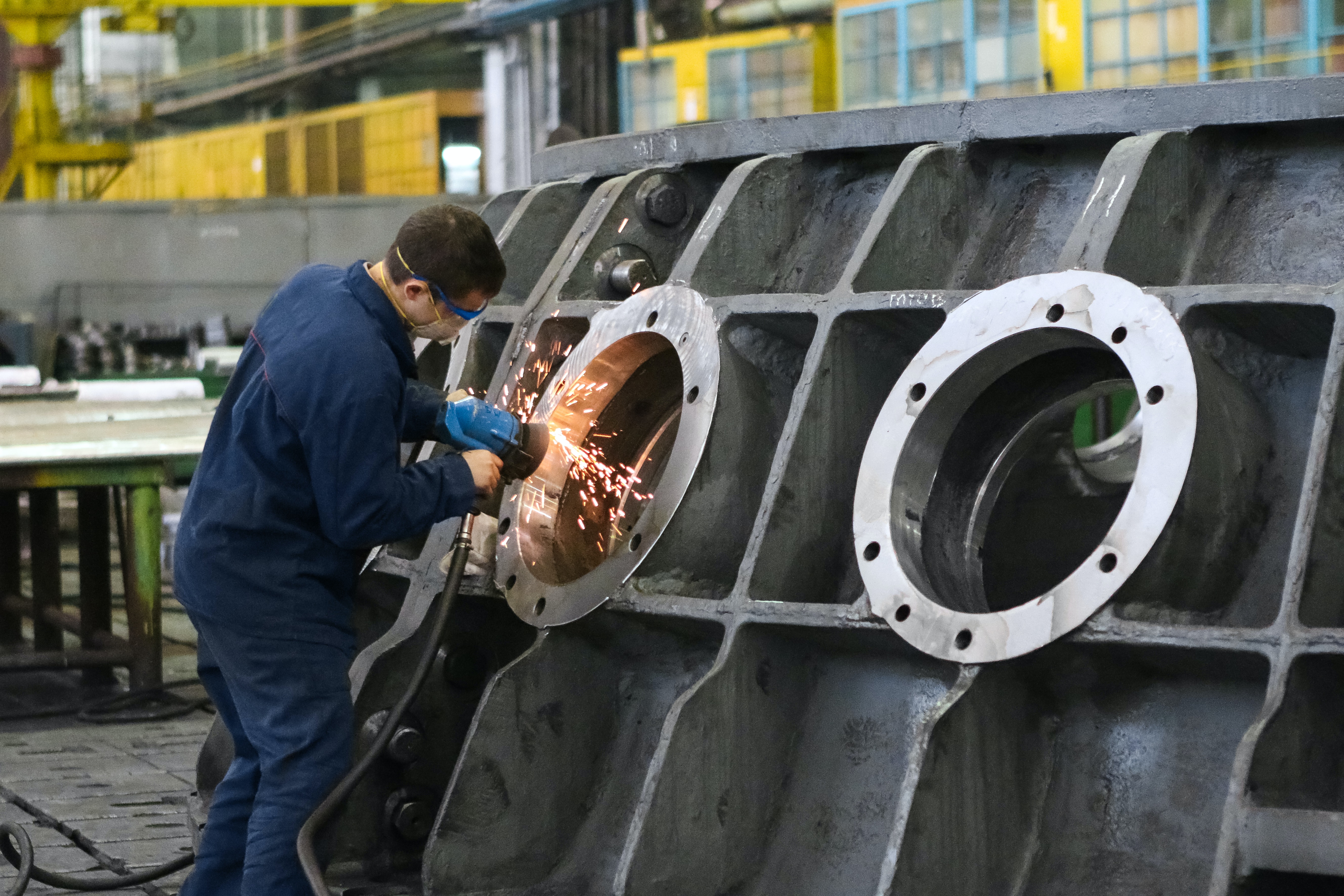




Fundamentals of Welding:
- Welding involves a high skill level and practical knowledge of subjects like physics, chemistry, and metallurgy.
- Welding is generally done on metals but is also used for fusing wood or thermoplastic parts.
- A completed joint is a weld joint or weldment.
- The parts fused are the parent material, while the material used to help form this weld joint is the filler material.
- Welding involves bonding the same type of material (metal and metal, or wood and wood) using heat welding, pressure welding, or both.
- Welders add metal to the welded joint to strengthen the weldment, while a shielding gas like carbon dioxide protects the joint from contamination through natural elements.
- Different metals react in different ways, depending on their physical, mechanical, and chemical properties.
- Heat can alter the strength, ductility, and malleability of metal. Welding can straighten out a warped piece of metal by applying adequate heat.
- Welding involves the heating and cooling of the metal – there is no other chemical reaction involved. However, the weld becomes weak if oxygen reacts with the molten metal. Using protective gases around the weld pool prevents oxygen and other contaminants from damaging the joint.
-
Extreme heat can alter the crystalline structure and weaken any metal.
Benefits of welding:
- The technique creates a permanent weld and is excellent for the fusion of two materials.
- Using the right filler metal ensures strength and durability, producing long-lasting weld joints.
- In terms of costs, this method is quite economical in terms of materials, fabrication, and equipment.
- The process is versatile and flexible – used indoors as well as outdoors.
- Welded joints look good, smooth, and polished in terms of appearance.
- One of the fastest methods in terms of the speed of fabrication.

Fill this form




How does welding work?
A welding gun or torch melts a specific part of the parent metal. This process, conducted using high heat (typically with the addition of filler material), creates a molten metal pool so that it is easy to join a new metal part to it. Instead of heat, pressure is also used to weld metals together (pressure welding) depending on the type and thickness of the material.
- Metal welding: In most cases, using pressure and heat together over the base material enables quick and efficient metal welding. As mentioned above, a shielding gas safeguards the molten metal or weld pool from getting contaminated or oxidized.
- Plastic welding: In plastic welding, the surfaces are first prepared, followed by heat and pressure application. After this, the materials are cooled.
- Wood welding: Welding wood involves subjecting the materials to pressure before using the same heat that the linear friction movement creates.


Welding types and process: The welding process depends on what the material is. In case you want to become a professional welder, you must understand all the different processes well.
Stick Welding (SMAW):Shielded Metal Arc Welding (SMAW), more commonly referred to as stick welding, involves using welding rods or sticks. The stick consists of the filler material and flux (which enable the welding process and protect the weld). Used across construction, shipbuilding, field repair, mining, manufacturing, and aerospace, this type of welding is affordable.
Gas Metal Arc Welding (GMAW): Also called Metal Inert Gas (MIG) welding, the gas metal arc welding process uses a welding gun through which an electrode wire passes. The result is an electric arc that produces the heat required for welding. It also creates a shielding gas that protects the weld. Used for manufacturing, automotive, industrial, and construction processes, this technique is easy and efficient.
Flux-Cored Arc Welding(FCAW): Just like MIG welding, FCAW is great for outdoor welding work and general repairs. This technique finds its application in industrial welding, manufacturing, pipeline repairs, shipbuilding, and manufacturing. The difference between MIG and FCAW is that the latter uses a tubular filler wire that contains the flux.
Tungsten Inert Gas Welding (TIG): This particular type of welding uses a non-consumable electrode that consists of tungsten to produce the arc. Among the most popular types of welding, TIG welding creates a clean, smooth, and superior quality weld. Industries like art, automotive, and aerospace use gas tungsten arc welding.
Submerged Arc Welding(SAW): SAW is a welding method that uses flux but is different from FCAW because the process happens under a blanket of granular flux. This is one of the safest types of welding because it creates lesser welding fumes and ultraviolet light. SAW is the preferred welding technique in vessel construction, industrial manufacturing, and structural construction.
Hyperbaric Welding: This is a process that welders use underwater. The wet welding technique utilizes stick welding, where the flux produces bubbles that act as a shield to prevent the welder from being electrocuted.


Welding Equipment:
Welding is a specialized job that requires you to have a variety of essential tools, including (but not restricted to) the following equipment:
- Welding gun
- Welding torch
- Wire brush
- Chipping slag hammer
- Angle grinder
- Tape measure
- Welding magnets
- Soapstone marker
- Pliers
- C-clamps
- Electrode tip cleaners
- Flint strikers
- Cold chisels
- Screwdrivers
- Charged electrode
- Wire and electrode feed
- Safety glasses
- Welding helmet
- Welding gloves
- Heat-resistant jacket
- Leatherwork shoes
-
Earplugs
Welding Joints:
Butt joint: A versatile and common welding joint, where you place two metal pieces together in the same plane, welding the side of each piece.
Tee joint: This joint features two pieces intersecting at a 90-degree angle, which forms a T shape. You can also create the joint by welding a tube or pipe onto the base metal.
Corner joint: As the name suggests, a corner joint meets in the corner, forming an L shape.
Lap joint: Used for sheet metal, this joint features two pieces of the metal placed on top of each other to create the lap joint.
Edge joint: Known to withstand force and pressure better than any other joint, the edge joint involves placing metal surfaces together to ensure even edges.


